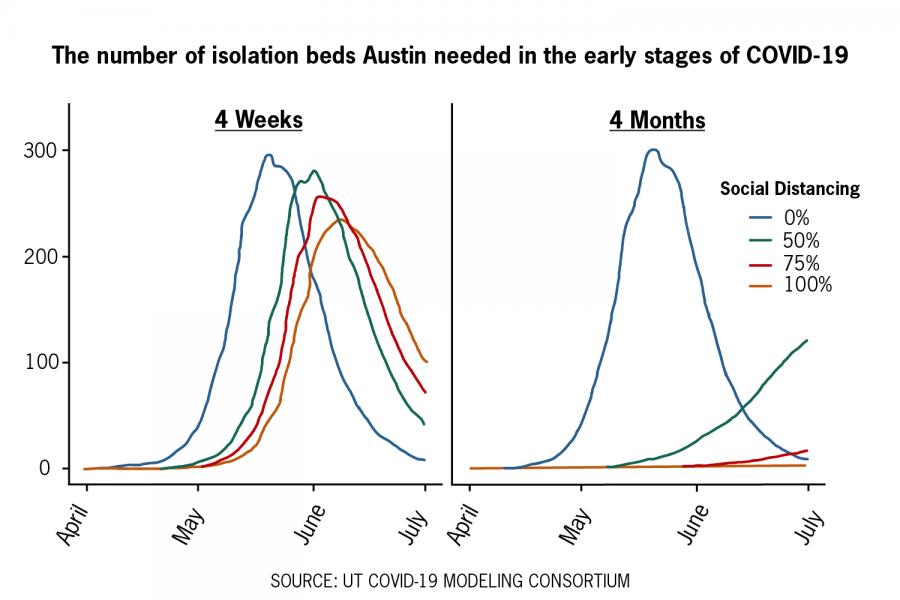UT-Austin study helps City of Austin provide support for homeless population during COVID-19
June 10, 2021
UT-Austin’s COVID-19 Modeling Consortium developed a calculation for the number of isolation beds the city would need for people experiencing homelessness in an epidemic through a study published May 12.
Biochemistry senior Tanvi Ingle, the lead author of the study, said in an email that Austin Public Health asked the consortium to project the number of isolation beds needed for people experiencing homelessness in an effort to curb the spread of COVID-19 within the homeless population in March 2020.
“Our projections helped the City of Austin finalize hotel lease agreements for isolation facilities that helped people experiencing homeless isolate themselves,” Ingle said. “This research also supported Austin Public Health’s decision to create multiple protective lodges that would cocoon high-risk (people experiencing homelessness) with pre-existing conditions from being exposed to the virus.”
UT Alumnus Maike Morrison said she created a mathematical model for the study that used information from their previous COVID-19 transmission model to find the number of people experiencing homelessness who would contract COVID-19 in a day and how many tests return positive or negative.
Ingle said the team projected the number of isolation beds needed by going through seven different scenarios of social distancing and contact reduction.
The research projected that under the worst-case scenario, with no social distancing, a maximum of nearly 300 people experiencing homelessness would need isolation rooms simultaneously, Ingle said. Using this projection, the City of Austin was able to provide shelter for some of those experiencing homelessness, she said.
According to the study, at the end of March 2020, the city decided to lease 205 isolation rooms. When data was collected in October, 130 rooms was the maximum that had been used in one night.
According to an April 2021 article by KVUE, the city now has 340 rooms for those experiencing homelessness, with 177 currently occupied.
“People experiencing homelessness face many unique barriers to social distancing and accessing health care, which places them at risk for severe COVID-19 outcomes,” Ingle said.
Matthew Mollica, executive director of the Ending Community Homelessness Coalition, said he is thankful for the research team and the University stepping up and helping those experiencing homelessness during the pandemic, and thought the research raised awareness of the issues facing the homeless community. He said the efforts made by the university helped the city identify those who were at high-risk, get them into congregate shelter, and provided the care they needed.
“I think one of the things that a pandemic like this has shown and continues to bring to light but exacerbated is the lack of access to quality, affordable housing and healthcare and what those impacts can have on the population and how needed housing is as a healthcare intervention,” Mollica said.
Although the city is still currently leasing hotels to provide housing, it is not clear if these will transition to permanent housing options. Mollica said in order to be better prepared for another pandemic, the city would need to provide quality housing and affordable healthcare for people experiencing homelessness to ensure their health and safety.
Spencer Fox, a research associate in the department of integrated biology and the associate director for the consortium, said the model can be used to determine sufficient resources for cities other than Austin for the next few months to years, or even for other infectious diseases.
“This work was built off of this model of COVID for Austin, but our kind of isolation bed estimation framework could be used with really any epidemic or other epidemiological model to help understand the number of beds needed to isolate for specific vulnerable groups,” Fox said.
Ingle said she is proud that the research had a direct impact on Austin’s public health policies.
“I continue to be inspired by everyone on the team who used their unique perspective to help protect people experiencing homelessness,” Ingle said. “I am grateful to have been a part of this important research effort.”



